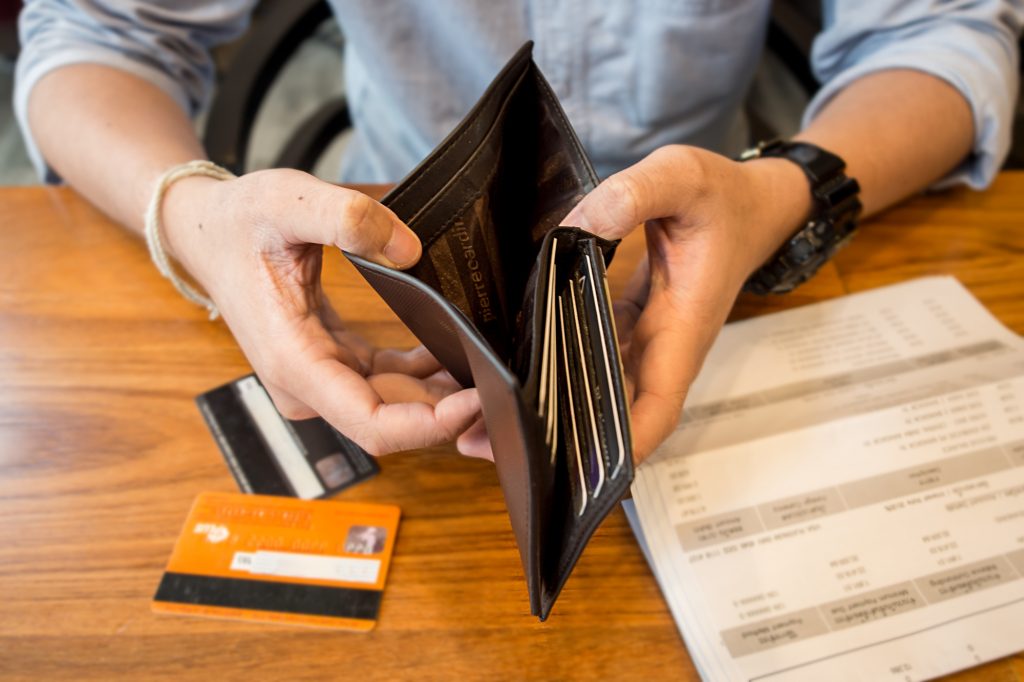How to Get Rid of Debt: 7 Tips from Financial Experts
Do you feel like you’re drowning in debt? If so, you’re not alone.
Total consumer debt in the United States recently surpassed $1.3 trillion, and the average household has about $5,000 in credit card debt.
Clearly, many Americans are struggling when it comes to staying on top of their bills and getting out of debt.
If you’re tired of stressing out about money and want to know how to get rid of debt, keep reading. Listed below are seven tried and true tips that will help you on your journey toward financial freedom.
1. Stop Using Your Credit Cards
No matter what kind of debt you’re facing, overusing your credit cards isn’t going to help you pay it off faster.
Put away your credit cards and stick to cash until your debts are paid off.
Withdraw a specific amount of money at the beginning of the month and commit to only using that. When it’s gone, it’s gone.
Going cash-only helps you be more aware of the purchases you’re making, too. When you have to actually see the money leave your wallet, you’ll be less inclined to make frivolous, unnecessary purchases.
While sticking to cash, you may also want to look into transferring the balance on your credit cards.
Move the balances to the card with the lowest interest rate if you can. That way, more of your payment will go to the principal and won’t get swallowed up by interest.
2. Create and Stick to a Budget
It’s also important to create a budget. This will help you figure out how much money in cash you need to withdraw each month.
Make a list of all your expenses and compare them to your monthly income. Once you have a good idea of what you spend and how much you earn, it’s time to look for places where you can make cuts.
For example, can you cancel that gym membership you never use? Or, do you need to eat out less frequently?
If you can’t or don’t want to completely eliminate a specific expense, look for ways that you can at least make it cheaper. Maybe you’ll need to switch gyms or eat out at less expensive restaurants.
Try to continue making cuts until your income is larger than the amount you’re spending.
3. Look for Ways to Increase Your Income
If you’ve made all the cuts you can and you’re still not earning more than you spend, you may need to look for ways to increase your monthly income.
This might mean picking up extra hours at your current job. Or, you might need to look for a side hustle.
It might not exactly be fun to have to do extra work. But, these days, there are tons of side hustles out there that make it easy for you to earn extra cash.
Consider driving for Uber or Lyft. Or, you can deliver meals to GrubHub or Doordash. These jobs are extremely flexible and make it easy for you to work when and as often as you want.
If you want to do something a bit more personal or with more structure, you can also look into tutoring or teaching classes at your local rec center.
4. Create a Debt Payoff Plan
There are several different approaches you can take when it comes to paying off debt.
One of the easiest is to simply make a list of all your debts and organize them from smallest to largest. Don’t worry about interest rates, just focus on the debt itself.
Once you’ve made the list, commit yourself to paying off the smallest debt first while making the minimum payments on all the other debts. Once you’ve knocked out the smallest debt, take on the next debt on the list.
This approach helps you gain momentum and avoid feeling overwhelmed by your debt.
You can also organize your debts by interest. Then, work on paying off the debt with the highest interest rate first. This approach can help you save more money, but some people find it to be a bit more overwhelming.
Do whatever makes the most sense for you and your family. As long as you’re making a conscious effort to pay off your debts, you’re on the right track.
5. Look into Debt Relief
It’s also worth it to look for ways to eliminate some of your debt completely.
Debt relief programs can help you consolidate your debt and lower your monthly payments so that you can improve your financial situation faster.
Employees at debt relief programs work with your creditors and negotiate with them to lower your rates and allow you to pay a lump sum.
This can be a good option, but it’s important to learn more about the specific program you’re considering using before signing up.
Debt relief programs can negatively affect your credit score, and they can come with hidden fees. Sometimes, it’s worth it to work with these companies, but you should be sure to read the fine print first.
6. Start Building an Emergency Fund
It might seem counterintuitive to create an emergency fund when you’re focused on paying off your debt.
In reality, though, even a small emergency fund can give you a cushion to help you take care of unplanned expenses so they don’t completely throw off your debt payoff plan.
Having an emergency fund in place helps you maintain momentum and keeps you motivated to continue paying off your debt, even when medical bills or home repairs arise.
7. Put All Excess Cash Toward Your Debt
Finally, make sure that you put any cash that comes your way toward your debt.
Did you get a nice tax refund? Put it toward your debt.
Did you win a bet? Put it toward your debt.
Even a small amount of money will make a dent in the total balance and will help you eradicate your debt faster.
Want to Learn More about How to Get Rid of Debt?
Whether you have a lot of credit card debt, a mortgage, or several auto loans, it’s important to remember that debt doesn’t have to last forever.
These seven tips will take you pretty on far on your journey to living a debt-free life. But, there’s always more you can do to improve your money management skills.
If you want to know more about how to get rid of debt, be sure to check out the finance and money section of our blog today.





